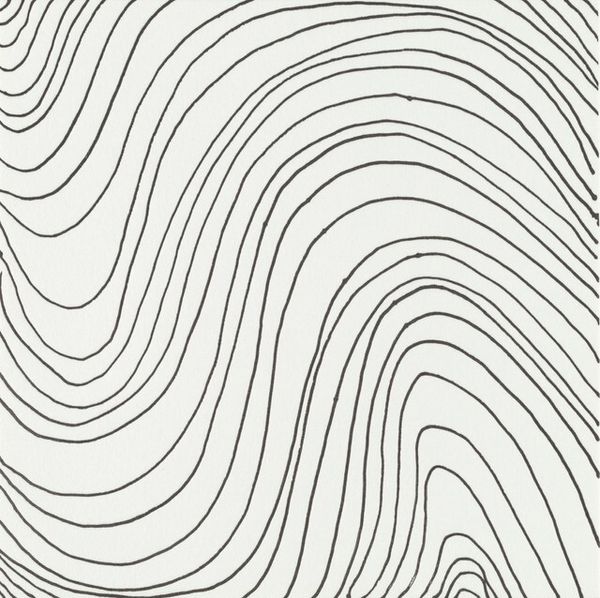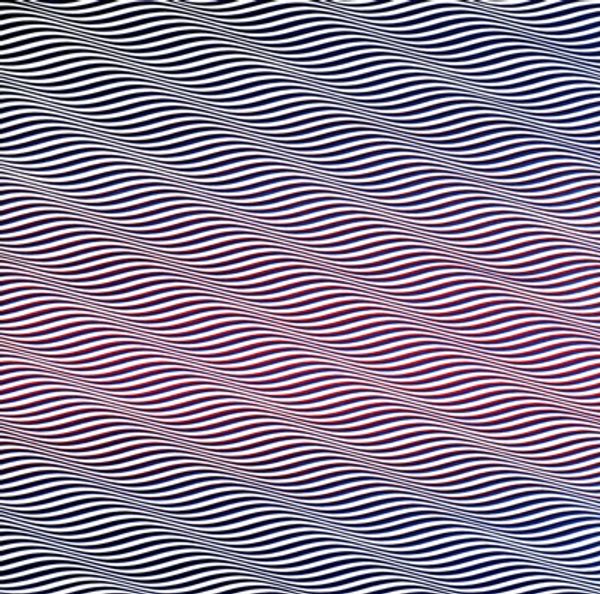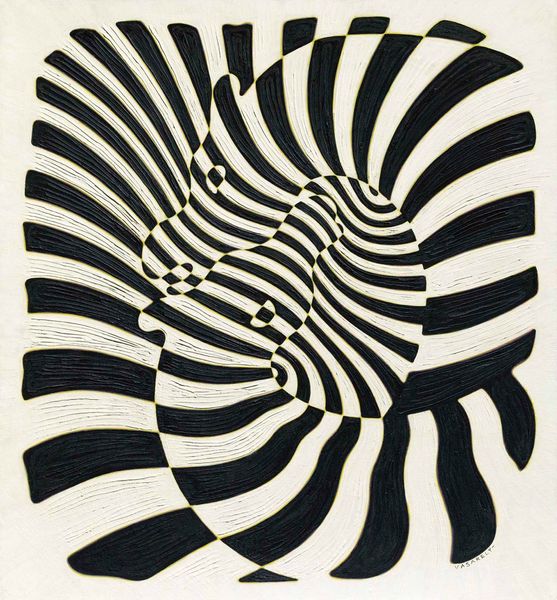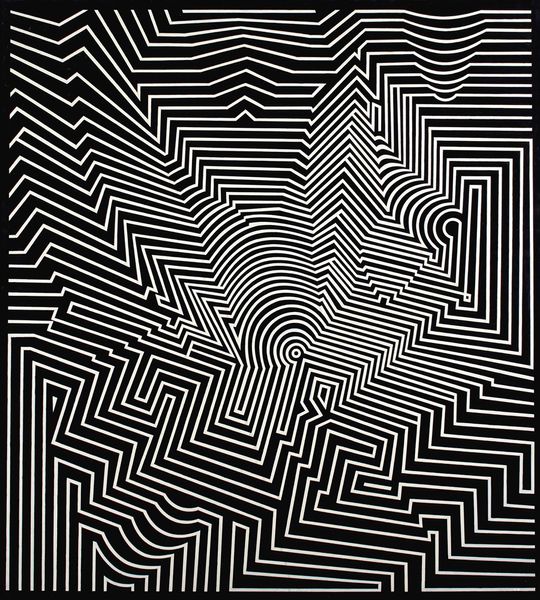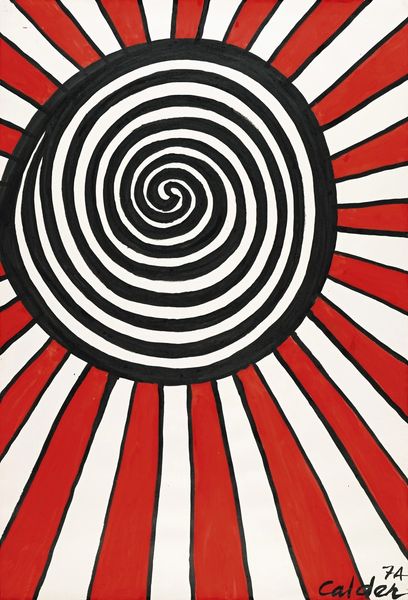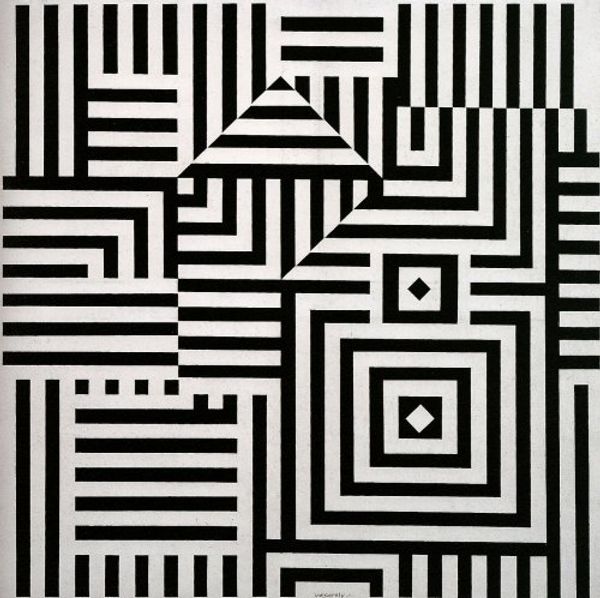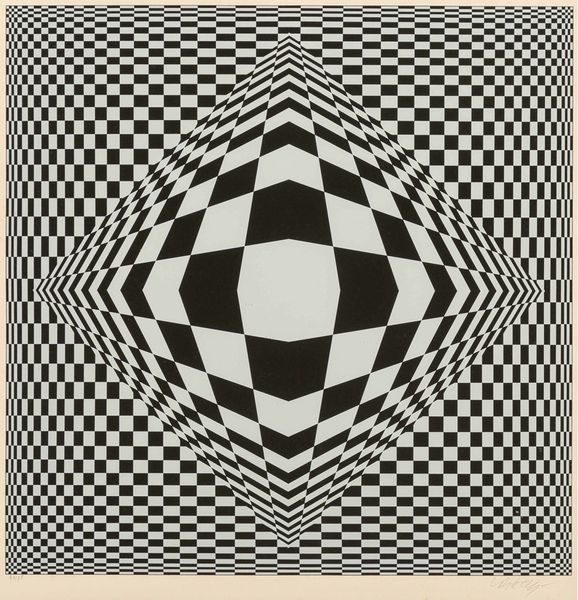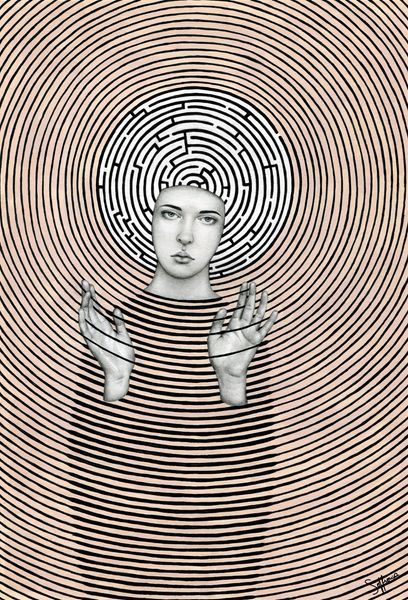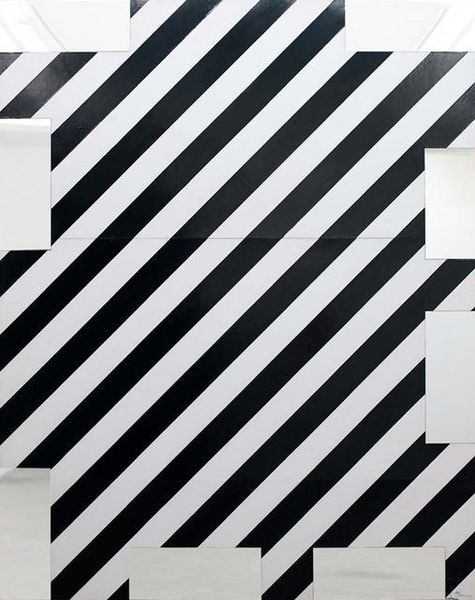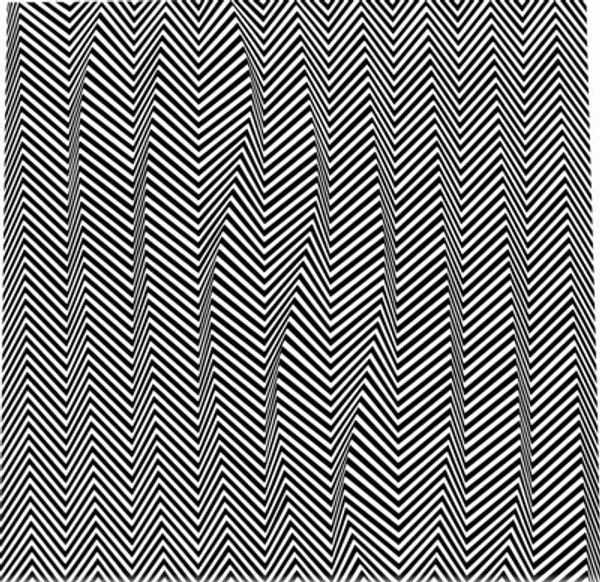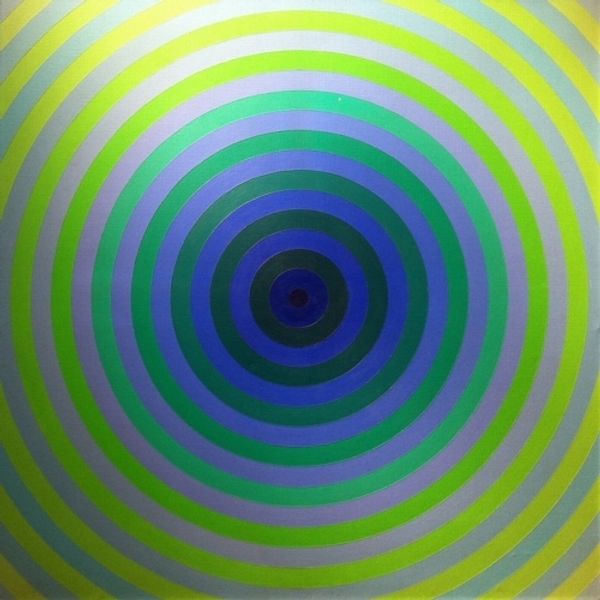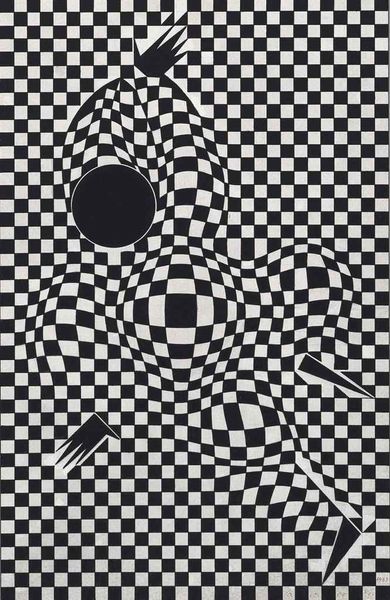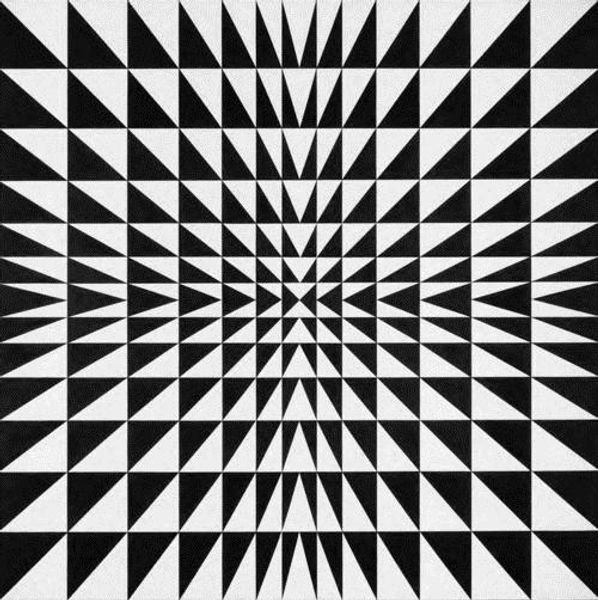
acrylic-paint
#
op-art
#
pattern
#
op art
#
acrylic-paint
#
geometric pattern
#
geometric
#
geometric-abstraction
#
abstraction
#
pop-art
#
line
#
modernism
#
hard-edge-painting
#
monochrome
Copyright: Bridget Riley,Fair Use
Editor: We're looking at Bridget Riley's "Intake" from 1964, created with acrylic paint. These black and white sinusoidal lines feel like they’re pulling me in – almost creating a sense of vertigo. How would you describe the impact of its formal qualities? Curator: Note the strategic deployment of black and white. Riley harnesses the stark contrast to generate a pronounced visual vibration, pushing the boundaries of perception. How does the sinusoidal arrangement of lines guide your gaze? Editor: They lead inward, definitely contributing to the sensation of depth, like a tunnel, but it’s also unsettling. Is this illusionary effect simply about aesthetics? Curator: Not simply. Observe the undulating pattern—the lines are not merely decorative. Riley uses seriality and repetition, bending and compressing them in calculated ways. Consider how this affects the canvas's surface. Does it remain static? Editor: Not at all. The lines give the flat surface dynamism and movement. It’s interesting how such simple elements create such a complex optical effect. Curator: Precisely. This is hard-edge painting operating at its finest, reducing the visual language to its essentials to create a destabilizing perception. Editor: It really highlights the power of line and contrast, creating an illusion of depth on a flat plane. It’s more than just pattern. It’s controlled visual trickery! Curator: Yes, and it’s a study on how we actively construct what we see, shifting away from passive spectatorship towards engaging, perceiving bodies.
Comments
No comments
Be the first to comment and join the conversation on the ultimate creative platform.
